Chapter Book Newbery
Chapter books transition readers from easy readers to longer novels. Their audience is typically between first and fourth grade, although occasionally a particular series will achieve popularity beyond fourth grade (e.g. JUNIE B. JONES, CAPTAIN UNDERPANTS). The chapters tend to be short, the plots episodic, and the book designs often include spot illustrations, larger font size, and more generous line spacing. Examples of chapter books from the Newbery canon encompass a range of styles, including a pair of RAMONA books; SARAH, PLAIN AND TALL; THE WHIPPING BOY; and 26 FAIRMOUNT AVENUE.
We’ve just discussed JUNONIA. Some promotional copy for that book stated that now a young reader could follow Kevin Henkes throughout childhood, from his early picture books (e.g. KITTEN’S FIRST FULL MOON), to his mouse books for older primary grades, to this new chapter book, and then on to his novels for older readers (e.g. OLIVE’S OCEAN). JUNONIA, then, is the epitome of that bridge from easy readers to middle grade novels.
ADVERTISEMENT
ADVERTISEMENT
For some people, the title of this post–Chapter Book Newbery–may seem like an oxymoron, but if we consider the needs of this audience more carefully and consider the books on their own merits, we can find several more distinguished books to consider this year. The first three are recently published, and on hold at my public library. I haven’t read them yet, but I’ve leaned on the reviews to help me suggest their best qualities.
 The first Alvin Ho book wound up on the the Oakland Mock Newbery list, and we briefly discussed the third one here last year, but some people were troubled by its portrayal of American Indians. Has Lenore Look righted the ship with the fourth volume, ALVIN HO: ALLERGIC TO DEAD BODIES, FUNERALS, AND OTHER FATAL CIRCUMSTANCES? Kirkus thinks so: “The formula that has worked so well in the earlier installments succeeds here again. Alvin’s frenetic first-person voice as he puzzles it all out is engaging and real, often laugh-out-loud funny, and his family life is touching-sweet and frazzled . . . His eventual ability to contextualize and accept the death of someone he knew evolves naturally, and the madcap scenario that precedes it, exacerbated by Alvin’s anxiety-related inability to talk in school, is at once hilarious and heart-rending.”
The first Alvin Ho book wound up on the the Oakland Mock Newbery list, and we briefly discussed the third one here last year, but some people were troubled by its portrayal of American Indians. Has Lenore Look righted the ship with the fourth volume, ALVIN HO: ALLERGIC TO DEAD BODIES, FUNERALS, AND OTHER FATAL CIRCUMSTANCES? Kirkus thinks so: “The formula that has worked so well in the earlier installments succeeds here again. Alvin’s frenetic first-person voice as he puzzles it all out is engaging and real, often laugh-out-loud funny, and his family life is touching-sweet and frazzled . . . His eventual ability to contextualize and accept the death of someone he knew evolves naturally, and the madcap scenario that precedes it, exacerbated by Alvin’s anxiety-related inability to talk in school, is at once hilarious and heart-rending.”
Sara Pennypacker’s Clementine series is another one that gets mentioned frequently here in the comments.  CLEMENTINE AND THE FAMILY MEETING is the fifth in the series, and the reviews have been similarly enthusiastic. Kirkus: “Pennypacker tackles the oft-written new-baby theme from a refreshing, older perspective; jealousy is not the foremost emotion, it’s vulnerability.” Horn Book: “Clementine is becoming a more complex character, and fans of this fine series will enjoy the nuanced way she has become more trustworthy and grown-up while staying true to herself.”
CLEMENTINE AND THE FAMILY MEETING is the fifth in the series, and the reviews have been similarly enthusiastic. Kirkus: “Pennypacker tackles the oft-written new-baby theme from a refreshing, older perspective; jealousy is not the foremost emotion, it’s vulnerability.” Horn Book: “Clementine is becoming a more complex character, and fans of this fine series will enjoy the nuanced way she has become more trustworthy and grown-up while staying true to herself.”
 Few children’s writers are as versatile as Emily Jenkins. She writes picture books, young adult novels (under the name E. Lockhart), and chapter books. TOYS COME HOME, while the third book in the series, is actually a prequel to the first one, TOYS GO OUT. Booklist praised it thus: “The omniscient narrator uses wonderful language, full of rich words and sounds, in descriptions of each adventure, from a pleasurable birthday party to a horrifying encounter with a nasty cat to perhaps the most charming account of puking ever typed—an episode that underscores the importance of close pals.”
Few children’s writers are as versatile as Emily Jenkins. She writes picture books, young adult novels (under the name E. Lockhart), and chapter books. TOYS COME HOME, while the third book in the series, is actually a prequel to the first one, TOYS GO OUT. Booklist praised it thus: “The omniscient narrator uses wonderful language, full of rich words and sounds, in descriptions of each adventure, from a pleasurable birthday party to a horrifying encounter with a nasty cat to perhaps the most charming account of puking ever typed—an episode that underscores the importance of close pals.”
ADVERTISEMENT
ADVERTISEMENT
Last year, THE LEGEND OF THE KING by Gerald Morris was easily one of my favorite novels, but I read it very late in  the fall, and could never seem to build any support for it. A couple months later, Elizabeth Bluemle at Shelftalker praised the entire series, giving Morris the inaugural Shelftalker SUNG (Saluting Unsung Neglected Geniuses) Award and then Horn Book gave THE LEGEND OF THE KING a Mind the Gap Award. So I wasn’t alone in my admiration, after all . . . I resolved to do better by Gerald Morris this year, and read early on THE ADVENTURES OF SIR GAWAIN THE TRUE, the latest book in The Knights’ Tales, his chapter book retellings of Arthurian legend. Needless to say, I’m very impressed, and will have more to say about this book later, but for now I want to give you a teaser, the opening paragraphs.
the fall, and could never seem to build any support for it. A couple months later, Elizabeth Bluemle at Shelftalker praised the entire series, giving Morris the inaugural Shelftalker SUNG (Saluting Unsung Neglected Geniuses) Award and then Horn Book gave THE LEGEND OF THE KING a Mind the Gap Award. So I wasn’t alone in my admiration, after all . . . I resolved to do better by Gerald Morris this year, and read early on THE ADVENTURES OF SIR GAWAIN THE TRUE, the latest book in The Knights’ Tales, his chapter book retellings of Arthurian legend. Needless to say, I’m very impressed, and will have more to say about this book later, but for now I want to give you a teaser, the opening paragraphs.
Now, everyone who knows anything at all about knights knows that they used to dress in metal suits and bash each other off their horses with pointy sticks called lances. This only makes sense, of course. Anyone who happened to have a metal suit, a horse, and a pointy stick would do the same.
Some may have also heard that knights fought dragons as well, often to rescue damsels. (Damsels are what they used to call women. Don’t ask why; they just did.) This is less sensible because–Well, really now! What would a dragon want with a damsel? Still, if a dragon did for some reason make off with one, then it would be perfectly reasonable for a knight to rescue her.
But what many do not realize is that, at least in King Arthur’s court, knights were also expected to be courteous and respectful. The king was very clear about this. He wanted no bullies at his Round Table. In fact, he said that courtesy was even more important than wearing metal suits and bashing people from horses. Not surprisingly, this notion took awhile to sink in. Knights who had spent their whole lives learning swordsmanship and pointy-stick-bashing did not always see how something else could be more important. Indeed, King Arthur had reigned for several years before he felt his knights were starting to get the idea.
How can you not love that? Distinguished? To the hilt!
Filed under: Uncategorized
About Jonathan Hunt
Jonathan Hunt is the Coordinator of Library Media Services at the San Diego County Office of Education. He served on the 2006 Newbery committee, and has also judged the Caldecott Medal, the Printz Award, the Boston Globe-Horn Book Awards, and the Los Angeles Times Book Prize. You can reach him at hunt_yellow@yahoo.com
ADVERTISEMENT
ADVERTISEMENT
SLJ Blog Network
One Star Review, Guess Who? (#202)
This Q&A is Going Exactly As Planned: A Talk with Tao Nyeu About Her Latest Book
Exclusive: Giant Magical Otters Invade New Hex Vet Graphic Novel | News
Parsing Religion in Public Schools
Take Five: LGBTQIA+ Middle Grade Novels
ADVERTISEMENT



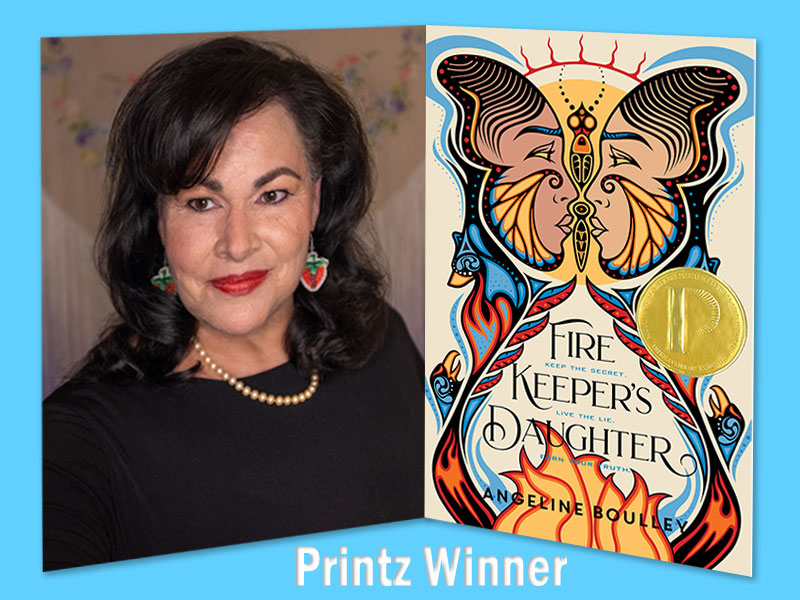
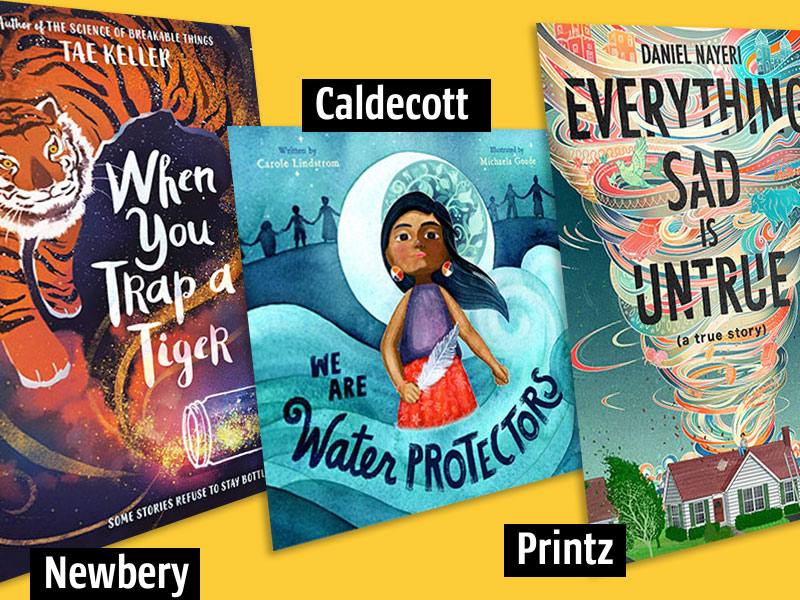
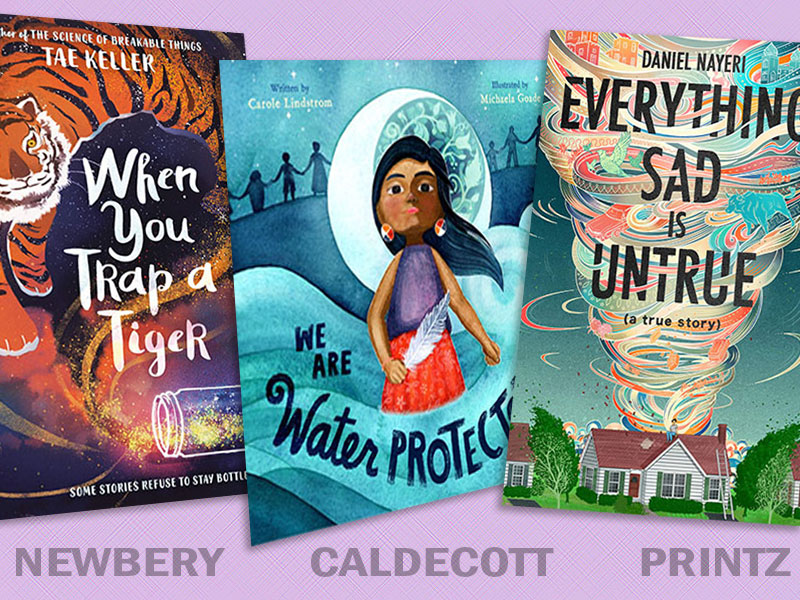
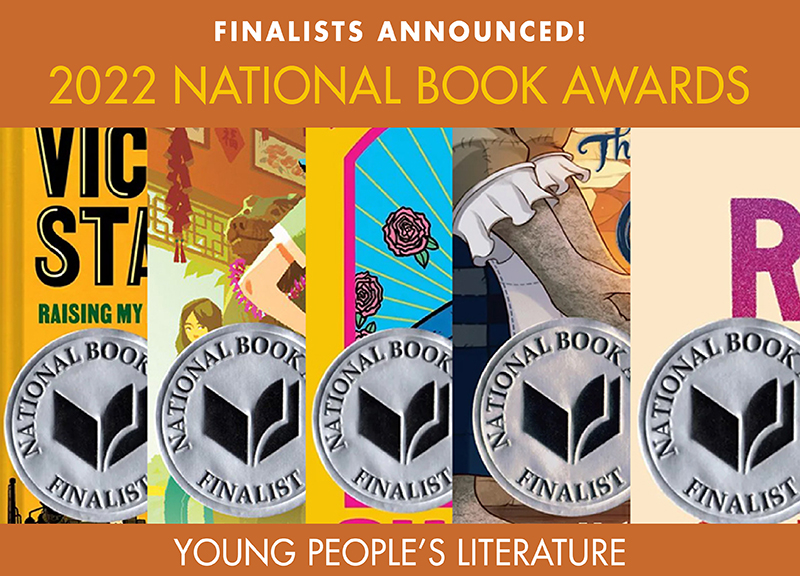
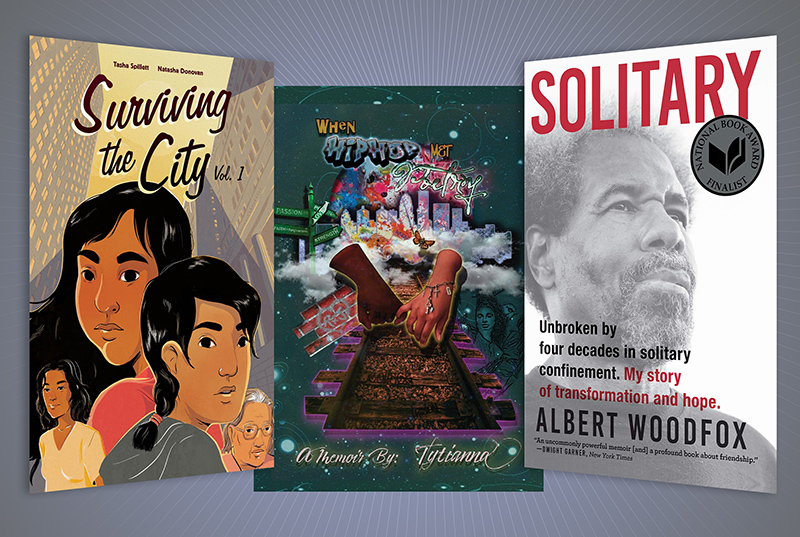
Jonathan,
I am so glad to read your praise of Gerald Morris! I have long been a fan of his Squire’s Tales series, and I have never understood why his books aren’t more popular–adventure and humor is such a winning combination.
I am really looking forward to reading all of these. They are all from series that I especially love. Thanks for highlighting them.
There really are some worthy chapter books out at the moment; Lois Lowry’s Gooney Bird Greene books also come to mind. Thanks for giving this category some attention!
I want to put in a plug here for Barbara O’Connor’s chapter books. Speaking as someone who takes forever to get to the heart of the story, Barbara’s books get there on page one and stay there. One of my goals in life is to write a “Barbara O’Connor Book.”
Gerald Morris definitely needs some attention! I find his books hilarious AND well written AND full of adventure. Perfect.
Agreed about Barbara O’Connor. I don’t think she has a book out this year, but we did look at THE SECRET LIFE OF OWEN JESTER last year. Another often overlooked author who writes chapter books for a similar audience (i.e. grades 3-5) is Andrew Clements who does have a book out this year: TROUBLEMAKER.
I’m happy to see the Gerald Morris love. I do hope people will make an effort to track down and read SIR GAWAIN THE TRUE because I’m quite serious about it, and would love to discuss it in more depth in a couple of weeks. It came out in April so it should be widely available in public libraries by now.
I really loved Erica Perl’s new book, When Life Hands You OJ. Not sure if it falls into this category, but it’s definitely a younger, shorter novel, if not a chapter book. She does something really unusual with tone and voice, and manages to write for younger readers with a bit of a bite. Really surprised me!
*gives
When Life GIVES you OJ.
OJ would be very hard to “hand” someone, I guess.
I’m a firm believer that the world is a better place because of early chapter books. I was beyond excited when both Alvin Ho and Clementine showed up on the same day last week. Both books dealt with some genuine kid issues in perfectly direct, poignant, and hilarious ways. They used appropriate language and context for their audience but never talked down to them. I was especially impressed with Look’s treatment of death in this Alvin Ho. She never diminished the very real fear Alvin and his brother felt over losing their grandfather, but still managed to have me rolling around in fits of laughter.
Oh and Kathi, I concur it is always a good year when a new Barbara O’Conner comes out. She is absolutely incapable of writing a book I won’t adore.
While we’re on chapter books, I hope you all will take a look at Uma Krishnaswami’s GRAND PLAN TO FIX EVERYTHING–it’s a romp of a novel, featuring a missing Bollywood star, the Indian postal service, monkeys, rose petal chocolate, a left-behind friend. I appreciate the deft way that Uma K. uses the omniscient narrator here, but I mostly appreciate her prose style that feels like such a perfect fit for the story. The main character, Dini, is smitten with Bollywood movies, and while she’s writing her own script, she basically becomes a player in a true Bollywood drama, just not exactly the drama she might have written for herself, and not one that is actually being filmed, but rather is playing out in real life. The plot is just as circular or circuitous as a Bollywood film, one thing leading to another to another and so on, even breaking out into the occasional song, but always in a way that propels the reader and the story ever outward through the rings of the circle, until the grand finale that brings everything and every one together, including the monkey.
What Krishnaswami has done so well is use Bollywood itself as a subtext to inform the story by using all the tropes that that particular genre offers up, including misunderstanding, missed opportunities, kismet, chaos, societal constraints, questionable taxi drivers, and in the process has created something wholly magical and entirely fresh.
Kirkus and PW have both given it stars, so it’s definitely not just me who loves it. And I do. Oh, I do.
I second Kathy’s suggestion. Also is referencing THE WESTING GAME and is totally charming.
Kathi’s, that is:)
Did anybody read THE TROUBLE WITH CHICKENS by Doreen Cronin? She scored such massive hits with the CLICK CLACK MOO and DIARY OF A WORM series that I was very eager to see her try her hand at chapter books. I read it ages ago, and just forgot to mention it. I liked it well enough, but the narrative voice reminded me of THE DUNDERHEADS.
Yes, I liked it a lot. Some adult readers have expressed concern that kids won’t get the jokes if they aren’t familiar with film noir, but I think they’ll still like it and laugh. And isn’t that what reminds you of The Dunderheads, Jonathan–that they’re both riffs on classic films/novels, rather than that this is derivative of The Dunderheads? In any case, I could get behind this as your younger pick for the shortlist.
Yes, they are both riffs on film noir. It just doesn’t feel as fresh the second time around. That’s my problem, not the book’s. I just reread SIR GAWAIN THE TRUE last night and really think that one deserves a closer look . . .
I thought The Trouble with Chickens was great, but to be honest I never thought about it as a Newbery possibility. I don’t see why not, but I’d have to take another look to make an argument either way. I loved The Dunderheads, but never thought of it while reading Chickens.
Ok, question for Wendy or Jonathan: Wendy says that some adult readers have expressed that kids won’t get the jokes in THE TROUBLE WITH CHICKENS if they aren’t familiar with film noir . . . Is this something the Newbery cares about? Or does this fit under appropriateness or style? Because part of me thinks, that children aren’t always going to have the schema to go along with particular styles or themes of books, and that it’s the books’ job to build that knowledge or introduce children to something new.
With THE TROUBLE WITH CHICKENS, if one of it’s strongest “distinguished” elements is it’s style, yet the style is a play off of film noir which many children might not be familiar of, does that hurt the book when discussing it as a Newbery?
And I actually wouldn’t be surprised if kids did pick up on the style and recognize it as a “black and white”, old-fashioned, voice over sort of detective book. They might not know the “term” film noir, but I think they’d recognize it for what it is. I’d fully endorse this one getting some discussion time on here!
I really ENJOYED TROUBLE WITH CHICKENS and read it to my second graders last spring. They enjoyed the book but didn’t get any of the hardboiled detective references.
[irrelavent aside]
In some of the comments above some of you were refering to the story as a send up on film noir. I think it’s much more accurate to use the term hard boiled detective fiction (works of Hammett and Chandler being the most acclaimed).
Film noir really refers to the style and not neccessarily content. It’s not a genre per se more of a loose collection of post ww2 films recognizable by the heavy use of chiaroscuro lighting techniques. Yes many hard boiled detective novels were turned into films that we would consider film noir but there are an equally large number of films noir which do not feature detectives, cops, femmes fatale, or any of the other hard boiled detective fiction tropes seen in THE TROUBLE WITH CHICKENS.
Corin no doubt watch a number of hardboiled detective films that fall into the film noir style while writing TROUBLE WITH CHICKENS but i’m pretty sure she also went back to the source material (again Chandler and Hammett most likely) as well.
So . . . is that a knock on the book? That kids may not pick up on the references? (Serious question.)
I think children can appreciate the style of the prose in THE TROUBLE WITH CHICKENS even if they do not recognize it as being an homage to hard boiled detective fiction (thanks for the distinction, Eric).
A couple more chapter books to keep an eye out for: GOONEY BIRD ON THE MAP by Lois Lowry and SPUNKY TELLS ALL by Ann Cameron (two starred reviews). Anyone read either of them?
I have an academic film background, as well. What the film critic thinks of when s/he thinks of film noir and what the general public thinks of are different. It doesn’t really matter, but reading regular-public reviews, you will find people talking about film noir with this book; people are more likely to be familiar with, say, The Maltese Falcon (or, to be honest, parodies of The Maltese Falcon) than with the actual novels. Anyway. To answer Mr. H’s question: I think it would matter that children didn’t get the references IF it was only funny/enjoyable/understandable because of the references. If kids can enjoy it just as it is, and I think they will–if the plot makes sense, and it certainly does–then it doesn’t matter. Many of the more recent children’s movies are full of references and parodies that children don’t get (Shrek, Enchanted).
But you take this question a bit deeper with your first comment, about the style; we recognize it as being distinguished because we do get the parody. I think it’s true that someone who had no cultural references for this kind of storytelling might not recognize it as distinguished, but that doesn’t mean it isn’t, I think. There are lots of Newbery books that kids might read and wonder “why did THIS win the award?” about; the key is that they’ve just read some distinguished literature, even if they don’t recognize it as such yet. It’s easier for me to think of this in terms of the Caldecott. I remember vividly an elementary school librarian book-talking some Caldecott books, and holding up one and telling us that we might look at this and wonder why it was special because the drawings looked like they were easy to do, but that this was great art and we’d have to take her word for it right now. (I don’t know what the book was now, though I’d know it if I saw it.) I think it’s okay if kids aren’t able to recognize all the distinguished features of a book right away, as long as it’s still a good read for them.